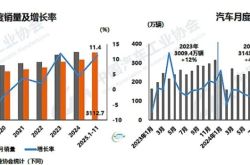One-Pedal Driving Mode Finally Faces Regulation by Authorities
![]() 07/08 2025
07/08 2025
![]() 6238
6238
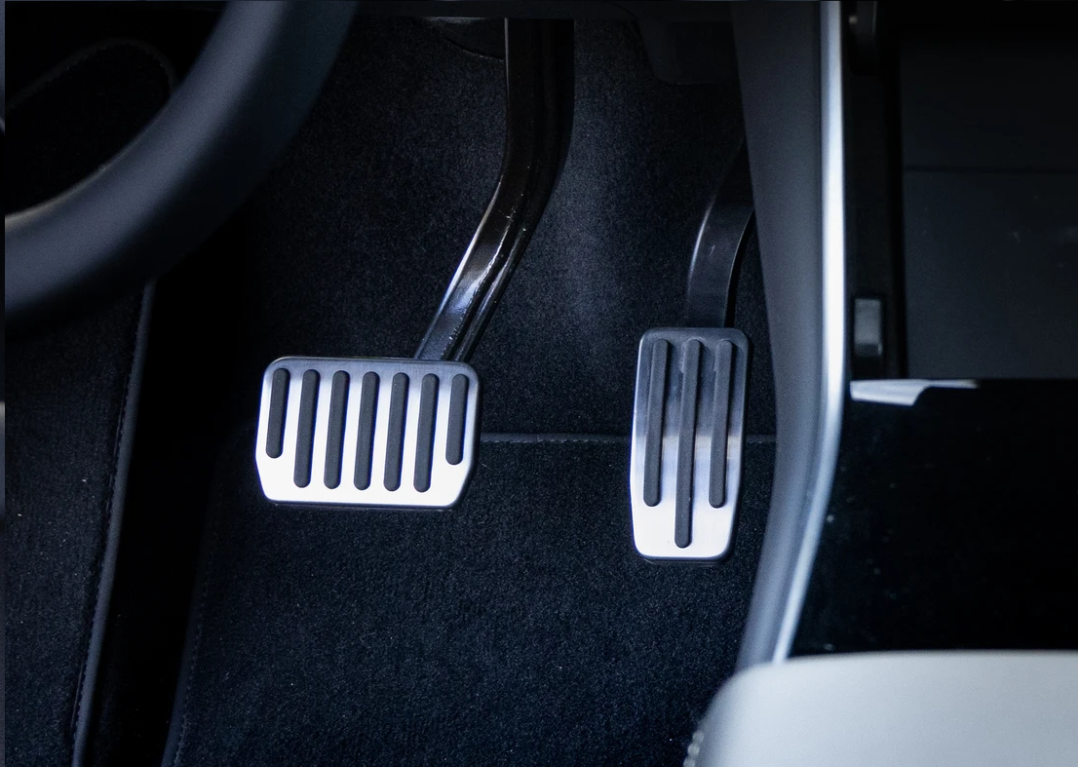
Not a Ban, but an Enhancement
Author: Wang Lei
Editor: Qin Zhangyong
Great news! The one-pedal driving mode is finally being refined.
Recently, the Ministry of Industry and Information Technology released the mandatory national standard "Technical Requirements and Test Methods for Passenger Car Brake Systems" (GB 21670-2025).
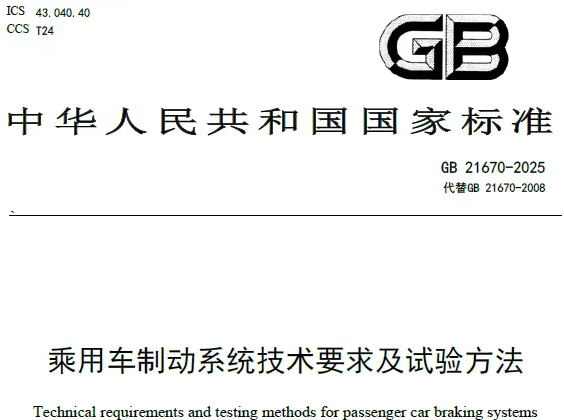
The new regulations encompass various aspects, including the contentious topic of kinetic energy recovery.
One specific regulation clearly mandates that under default operating conditions, releasing the accelerator pedal should not decelerate the vehicle to a complete stop.
In other words, under default conditions, the brake pedal must be engaged to bring the vehicle to a halt, effectively prohibiting the one-pedal mode in default settings.
In fact, last year, the Ministry of Industry and Information Technology solicited public opinions on five mandatory national standards, including "Technical Requirements and Test Methods for Passenger Car Brake Systems," which included the provision, "Releasing the accelerator pedal in forward gear should not decelerate the vehicle to a stop." However, at that time, this was still a draft.
Now, it's official.
01
Will the One-Pedal Mode Vanish?
This new national standard marks the first revision since the 2008 version. Most standards will come into effect on January 1, 2026, but those related to the "one-pedal mode" will be implemented on January 1, 2027.
Despite a nearly two-year grace period for the one-pedal mode, due to the principle of "policy advancement," automakers are likely to make adjustments this year to comply with the new standards early.
Let's delve into the detailed requirements proposed by the new national standard for electric regenerative systems, commonly known as kinetic energy recovery systems in new energy vehicles.
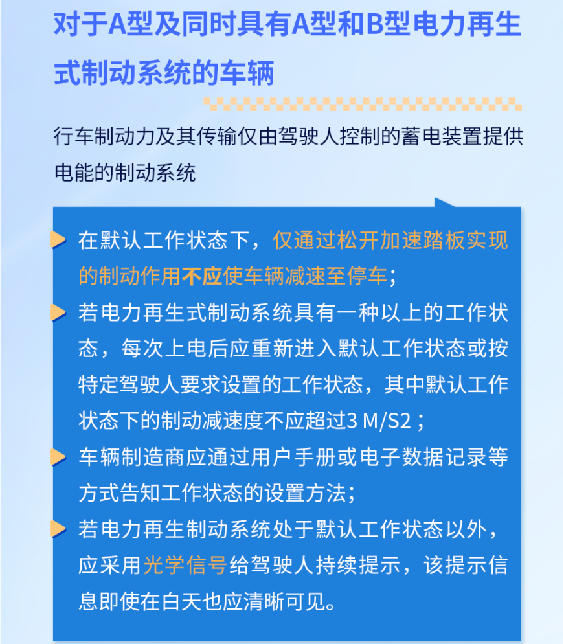
The new national standard introduces two fundamental concepts of electric regenerative braking: Type A and Type B. Type A electric regenerative braking does not belong to the service braking system and can only be activated by releasing the accelerator pedal or when the vehicle is in neutral, which is energy recovery.
Type B electric regenerative braking, on the other hand, is part of the service braking system and is activated through the brake pedal, also known as brake energy recovery.
The essence of the one-pedal mode lies in kinetic energy recovery. Unlike conventional methods, it offers a more robust option that can bring the vehicle to a complete stop without pressing the brake pedal.
The regulation stipulates that "under default operating conditions, releasing the accelerator pedal should not decelerate the vehicle to a complete stop." It's evident that the one-pedal mode isn't completely banned but restricted under default settings.
In other words, the one-pedal mode still has a chance to be retained. Under the new standard, the choice is left to the user.
For kinetic energy recovery under default conditions, a more detailed definition is provided. The regulation states: "If the electric regenerative braking system has multiple operating states, it should revert to the default state or a state set according to specific driver requirements after each power-on. The braking deceleration in the default state should not exceed 3m/s²." If you wish to enable the one-pedal mode, you need to find the method to set the vehicle's operating state in the user manual or electronic data provided by the manufacturer and set it to strong kinetic energy recovery. At this point, releasing the accelerator pedal will automatically decelerate the vehicle to a stop, as before.
Moreover, once set, there's no need to reset it. Additionally, it's crucial to note that when the user adjusts the default operating state, the vehicle should continuously prompt the driver with a "clearly visible optical signal during the day."
02
Tesla Under Scrutiny
The controversy surrounding the one-pedal mode has been longstanding, with polarized views. Some find it excellent, while others believe it should not exist.
This polarization stems from the mode's obvious advantages and disadvantages.
The primary role of kinetic energy recovery is to reclaim more kinetic energy, enhancing mileage. Additionally, this mode, akin to "electric braking," significantly extends the lifespan of mechanical braking components like brake discs and pads.
The disadvantages are equally apparent. It alters the core driving logic learned from the beginning – "press the accelerator to accelerate and press the brake to decelerate." When applied to the crucial acceleration and deceleration control of a vehicle, the associated safety risks are considerable.
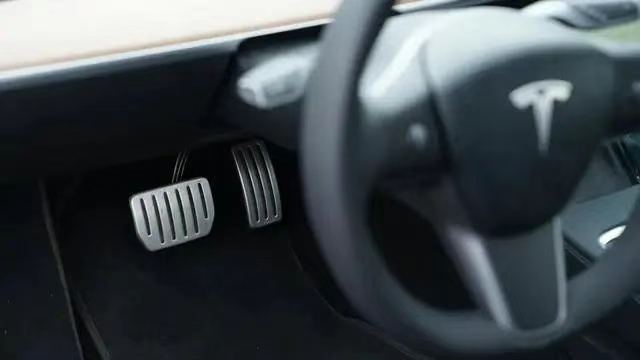
Many became aware of the "one-pedal mode" through Tesla, but it wasn't Tesla's innovation.
Long before Tesla, the 2013 BMW i3 was already capable of decelerating to a stop using kinetic energy recovery by releasing the accelerator pedal.
Since then, single-pedal modes have appeared in products like the Nissan LEAF and the Chevrolet Bolt. However, it was Tesla's high visibility that truly popularized the one-pedal mode.
In the past, numerous news reports of so-called "vehicle out-of-control" incidents emerged. These frequent accidents made Tesla's "one-pedal mode" a target of public criticism, and the mode began to be associated with Tesla.
In 2024, a new energy vehicle brand conducted a user survey, revealing that 32% of car owners had mistakenly used the accelerator pedal as the brake pedal in emergencies, with 15% resulting in accidents.
A simulation test by Tsinghua University's Automotive Safety Laboratory also showed that drivers accustomed to the one-pedal mode had an average reaction time 0.3 seconds longer when pressing the brake pedal in an emergency, equivalent to an additional braking distance of 8.3 meters at 100 km/h.
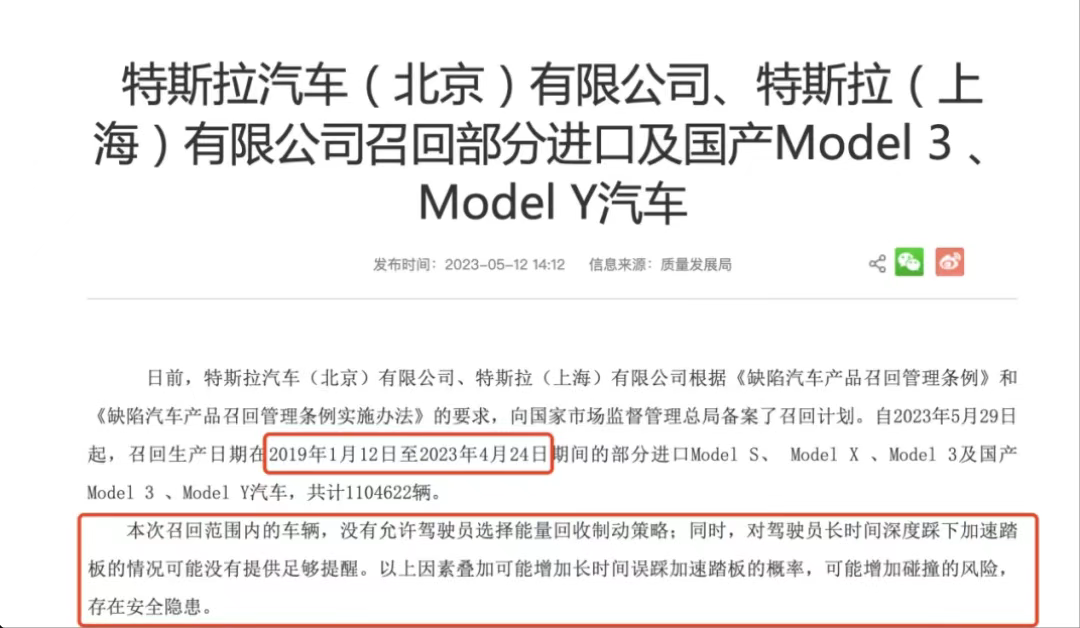
In 2023, Tesla recalled almost all models sold in the Chinese market over the past four years. The reasons for the recall were clear: it didn't allow drivers to choose an energy recovery braking strategy and might not have adequately warned drivers who deeply pressed the accelerator pedal for an extended period. These factors could increase the likelihood of prolonged accelerator pedal misuse, potentially raising the risk of collisions and posing a safety hazard.
"Decelerate with the brake, accelerate with the accelerator," the one-pedal mode blurred this fundamental driving habit, which is its most fatal flaw. Fortunately, with the new national standard, this mode is on its way out.
03
New Mandatory ABS Installation
Apart from restricting the one-pedal mode, another welcome aspect of the new national standard is that vehicles in (medium to high) kinetic energy recovery states will finally activate brake lights.
Many of you have likely experienced this on the road: the car in front starts to decelerate unexpectedly, and you must rely on your judgment to determine if it's slowing down, potentially leading to safety risks.
The new national standard clearly mandates that when the regenerative braking system's deceleration exceeds 1.3m/s², the vehicle must activate brake lights to alert following vehicles and other road users, thereby reducing the risk of rear-end collisions and other accidents.
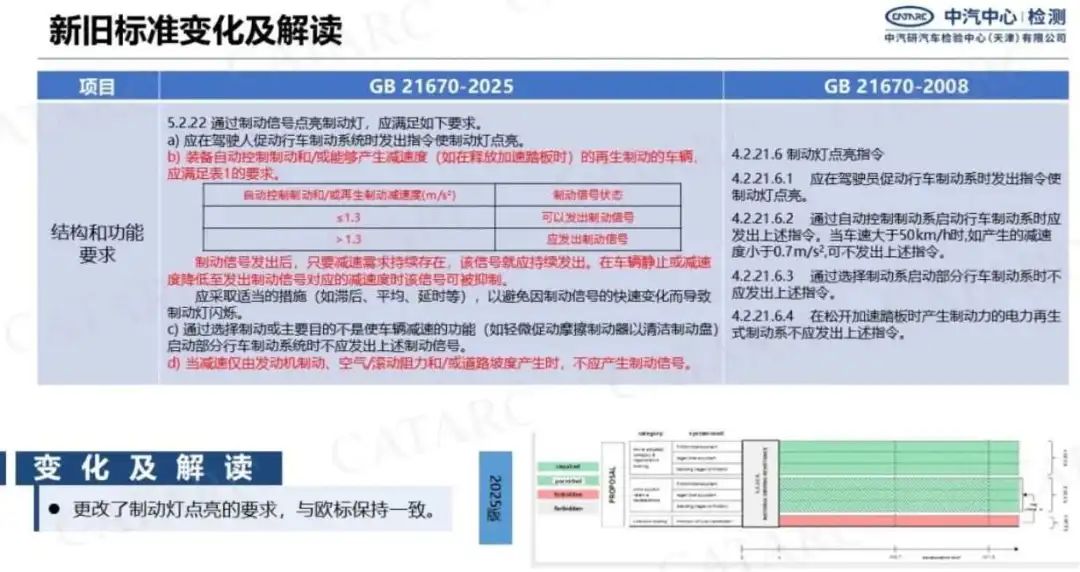
Moreover, once the braking signal is sent, it should continue as long as the deceleration demand persists. For models already type-approved, the new standard will come into effect on January 1, 2027.
Previously, there was no mandatory requirement for brake lights to activate due to the braking effect of kinetic energy recovery. Take Tesla's Model 3 as an example; its strong kinetic energy recovery mode can achieve a deceleration of up to 1.5m/s², but brake lights were not mandatory before.
Test data shows that the following driver's reaction time can be shortened by 0.2 seconds after seeing the brake lights, reducing the risk of rear-end collisions by 41%. With the new regulations, such safety hazards will be effectively mitigated.
If limiting the one-pedal mode focuses on the safety of the driver, the new regulation requiring brake light activation clearly prioritizes the safety of following vehicles.
Of course, not all deceleration conditions necessitate brake signal activation. For instance, the brake signal should not be emitted when part of the service braking system is activated through functions that select braking or whose primary purpose isn't to decelerate the vehicle (like lightly actuating the friction brakes to clean the brake discs). Also, when deceleration is solely caused by engine braking, air/rolling resistance, and/or road gradient, no brake signal should be generated.
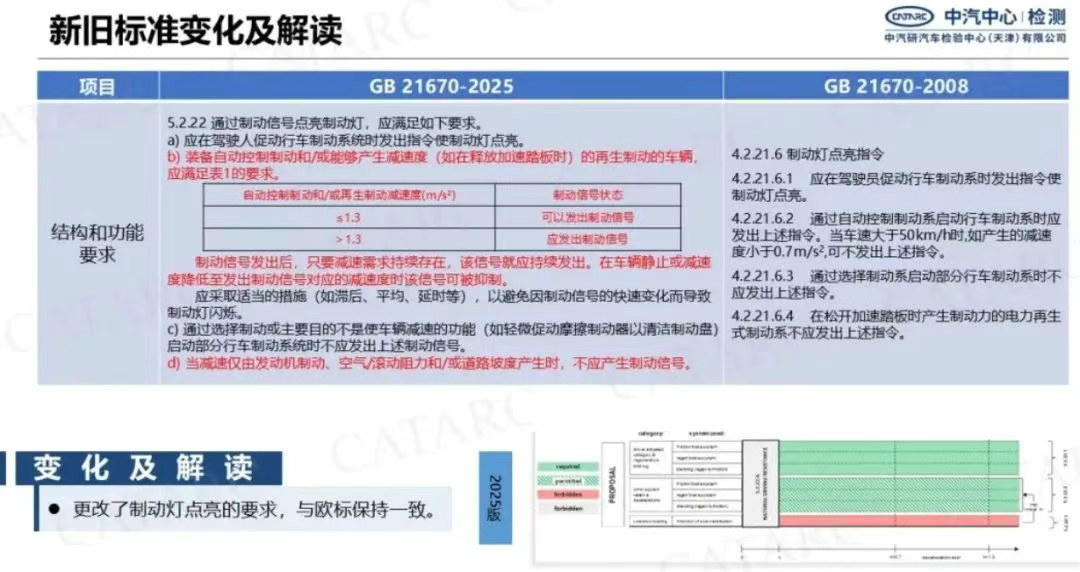
The threshold for triggering emergency brake signals has also been refined. An emergency brake signal is triggered when the deceleration is greater than or equal to 6m/s² and deactivated when the vehicle deceleration recovers to < 2.5m/s².
The new regulations encompass more than just these two changes. They also include ABS (Anti-lock Braking System) for the first time in the mandatory installation category for passenger vehicles, requiring all newly certified models to be equipped with this system.
In 2024, the ABS installation rate for passenger vehicles in China reached 92%, but 8% of entry-level models (primarily priced below 80,000 yuan) still lack it.
With the continued emphasis on safety, it remains to be seen if low-speed electric vehicles, often considered "outside the norm," will also be mandated to install ABS in the future.





